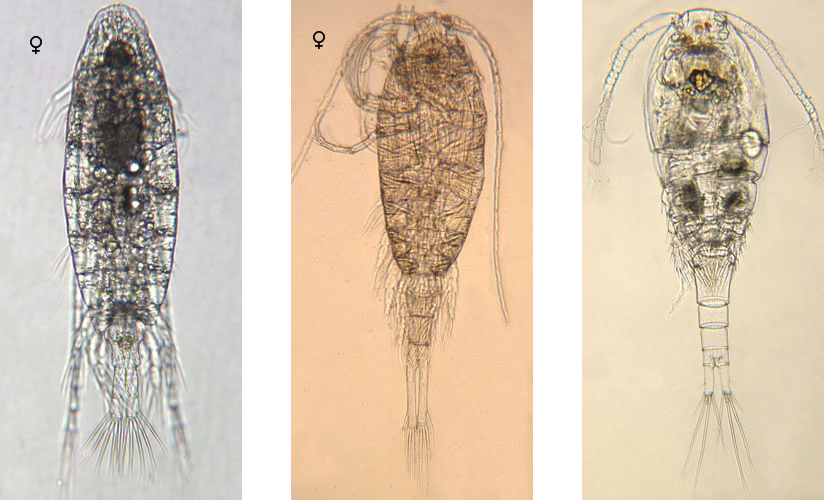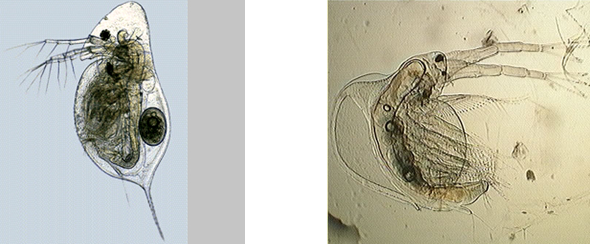Great Lakes Zooplankton Monitoring
What are Zooplankton?
Zooplankton are small, free-floating aquatic microorganisms. The zooplankton community is composed of both primary consumers, which eat free-floating algae, and secondary consumers, which feed on other zooplankton.
Types of lake zooplankton:
- Copepod, small crustaceans
 crustaceansAquatic arthropods (invertebrates) that have gills, joined legs and exterior skeletons. Crabs, shrimps, barnacles, amphipods and isopods are all crustaceans. found in nearly every freshwater habitat,
crustaceansAquatic arthropods (invertebrates) that have gills, joined legs and exterior skeletons. Crabs, shrimps, barnacles, amphipods and isopods are all crustaceans. found in nearly every freshwater habitat,
 (L-R) Leptodiaptomus ashlandi, Limnocalanus macrurus, Mesocyclops edax (Source: USGS GLSC)
(L-R) Leptodiaptomus ashlandi, Limnocalanus macrurus, Mesocyclops edax (Source: USGS GLSC)
- Cladocera, small crustaceans commonly called water fleas,
 (L-R) Daphina retrocurva, Holopedium gibberum (Source: NOAA GLERL)
(L-R) Daphina retrocurva, Holopedium gibberum (Source: NOAA GLERL)
- Rotifers, complex, multicellular animals in a variety of sizes, shapes, and types
 (L-R) Brachionus calyciflorus, Hexarthra mira, Keratella cochlearis (Source: NOAA GLERL)
(L-R) Brachionus calyciflorus, Hexarthra mira, Keratella cochlearis (Source: NOAA GLERL)
Why Monitor Zooplankton?
Zooplankton are food for fish, making them a vital component of the Great Lakes food web and the Great Lakes fishery. Decreasing zooplankton populations means less food for fish, which results in fewer, smaller fish. Changes in zooplankton populations and diversity can also indicate water quality changes in the lakes overtime. Invasive zooplankton have altered the Great Lakes ecosystem, so monitoring zooplankton is another way to monitor invasive species in the lakes.
